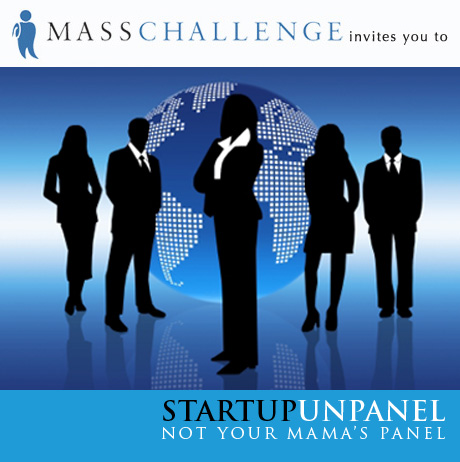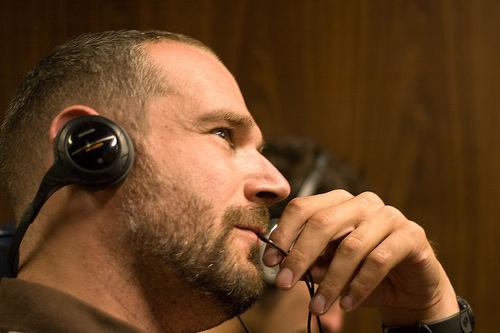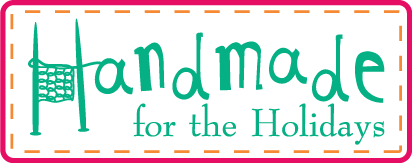
Voice Mail Archives
Past editions of Voice Mail, Beth Dunn's newsletter on writing and voice.
Posts by BethDunn:
MassChallenge Startup UnPanel

I am a big fan and supporter of the UnConference concept, especially as exemplified by the many and multiplying PodCamps in the world today.
Social Media Is Not A Generational Thing

Today on the HubSpot blog I'm attacking one of my (least) favorite internet memes -- that social media is somehow a generational thing, that "kids these days" are somehow wired differently, and that boomers and other, older generations either (a) aren't using these tools, or (b) don't or can't "get it."
Horse hockey, I say.
Read the whole post, Are You Too Old For Social Media.
A related concept that has also always irked me is the concept of the "digital native." As if the year of your birth somehow confers special skills and aptitudes on a person.
Please.
You know what confers skill and aptitude? Practice does, for starters. Diligent, sustained effort works, too.
Ever wonder why "kids these days" are such "naturals" at all things internet? It's because they've had all this free time in their youth to practice. It's all about time spent learning, not time spent on this planet.
I am far more of a "digital native" than many a Gen Y-er, despite my 1971 birthdate, simply because I have spent many hours over the years learning and practicing, messing about and getting my arms dirty up to my elbows in this stuff.
The good news is this:
You are not disqualified from any of this because of your date of birth.
If you want to recuse yourself from the investment of work and time involved in learning a new skill, that's totally fine -- it's entirely up to you. But please stop leaning on this particular excuse to do so.
It's just another new skill to be acquired, and like any new skill, requires practice, discipline, and sustained effort.
Does that sound like a young person's game to you?
A Preoccupation with Manners

I've got a new post up on the HubSpot Inbound Marketing Blog titled "What Did Jane Austen Know About Social Media?" and I've been thinking ever since it went up about the role of manners, and first impressions, both online and off, and how they affect our perceptions of people and brands.
One of the most common admonitions I make to newcomers to the social media space is to Listen First; don't go barging in to a new account on Twitter or Facebook or even a blog without first spending some serious time listening to the people who are already there, observing their peculiar customs, and internalizing some of their mannerisms.
Did you ever study abroad?
The obvious metaphor is that of visiting a foreign country, especially one in which you are planning to stay for many months, building friendships and establishing ties that will last.
But I believe we do the very same thing -- or should -- when we start a new job, or enroll at a new school. Hang back a little bit, see who's who, what's what, learn something about groups and group behavior in our new setting, where the lines of power truly lie, and who lies inside or outside of those magic circles.
Of course, what you DO with this intelligence is also a mark of character. Do you immediately seek to ally yourself with the popular, the pretty, and the powerful? Or do you seek to build ties among the marginalized, seek out true allies in many, smaller groups of friends with little political sway, and begin to learn how your talents, your skills, can help them?
In short, do you behave as if you're in it for you, or you're in it for them?
If you're a business, or (especially) an individual entering the online world and trying to establish your presence, your brand, your reputation, and you pursue the first option, seeking out only the powerful and popular, then you run the risk of establishing your name as one who is only in this for themselves.
A fortune hunter, as it were.
But if, instead, you pursue the second option, and seek out the marginalized, the confused, the softer voices among the din, with whom you might share a passion and a goal, and try to help them, to bring them along with you as you rise, well, then you might just establish a reputation as one who is in it for others.
If you're a business, wouldn't you prefer to be seen as being in it for your customers and for the larger community?
This is part of what I was getting at in my HubSpot post. Focus on other people, be courteous, be helpful, be kind.
Tuck those elbows in, for a change, and stick out your hands instead, and see what happens.
The Birth of Inbound Marketing

I love a good infographic as much as -- OK probably more than -- the next guy. Today the folks at HubSpot (my place of employment and the source of much personal and professional joy for me) came out with this beauty:
Listen first, tweet later

I was getting a client started on Twitter the other day, and we talked for a while about how important it is to get the "feel" of a place before jumping in there and yammering away.
Of course, this goes for any situation where conversation is the medium, doesn't it?
Listen first
On a recent episode of the excellent marketing podcast Marketing Over Coffee (iTunes link), Chris Brogan made the point that he hears a lot of people worrying about what to say on Twitter, and not enough people worrying about how to listen.
We tend to rely on the trusty old metaphor about how you wouldn't walk in to a room and just start talking in a loud voice, to nobody in particular, about yourself, your company, or your products. Most of us are more skilled than that, and we know that a good conversation starts off with some version of "how are you?"
At an unfamiliar social event, the best move is often to say little and observe much, and the same goes for new social platforms that are unfamiliar. But you need to be disciplined about it, and learn to incorporate your new listening activities into your workflow on a consistent basis.
If you're already checking your email first thing in the morning, why not add to this ritual a little module of listening to your stream on Twitter, to find out what they're interested in, what they'd like to talk about, and what they might find of value?
Try this:
- Install Tweetdeck on your desktop.
- Before opening up your email, open up Tweetdeck.
- Read down your stream until you find something that you think your customers, friends, or fans would find of interest.
- Retweet it, adding in a word or two of commentary, and/or
- Reply to the person who tweeted it, asking them a clarifying question, or responding in some helpful way.
- Repeat 5-7 times.
If you follow a stream of people who are active and regularly post good content, this should only take about 10-15 minutes each morning. It's a great way to get your brain moving first thing, and to take the temperature of the world outside your office before burrowing down into your own workday.
If you don't follow a stream of people who are active and provide good links, questions, and observations, think about expanding your circle of friends on Twitter. You're as interesting as the company you keep.
And Presto
With this simple addition of a short, manageable, and enriching daily ritual into your workday, you've figured out how to get started on Twitter. Listen, respond, and retweet. Pay attention to your Self-Serving Ratio -- for every time you promote yourself, your business, or your products, promote, praise, or republish someone else's genius.
It doesn't have to be in the morning. Me -- I'm an insomniac, so I do most of my retweeting and great-content-discovering at 2 and 3 in the morning. Do what works for you.
What works for you?
Fun & effective social marketing from Ikea

I love this creative use of Facebook by an Ikea store in Sweden.
Still think social media is a fad?

I've seen videos like this before (see below - this related one comes to mind), but it's good to see an updated version with the latest stats -- considering how rapidly things are changing, videos like these need to be updated constantly.
It's easy to get a little jaded about social media these days, even if you've pretty much signed on with it. New platforms seem to emerge every day, each one claiming to be the Next Big Thing. Should you jump on that bandwagon? Or should you hold out until the business case is more clear?
The key is to remember ALWAYS that it is NOT about the platform (Facebook, Twitter, YouTube, blogs), it's about the fundamental shift in how we communicate that these platforms represent.
Any new platform that advances that shift in a meaningful way -- for enough users -- is going to have an impact. So when you start to feel skeptical (or overly enthusiastic), try to look beyond the shiny new box, and see if you can peer inside to see how the conversation is being transformed... and accelerated.
Hat tip to Todd Van Hoosear (@vanhoosear) for the link to the above video by Socialnomics09, which Todd played in his talk at the Association of College Unions International region 1 conference in Connecticut this weekend (Todd's full slidedeck can be seen here on Slideshare).
Giving: It's Not Just for the Holidays

So I'm coordinating this very fun project with my friend Melissa Averinos called Handmade for the Holidays. Yesterday we were featured in a story about how local nonprofits and charities are using social media to promote their causes.
"Using" Social Media
It's funny, because not only are we not a nonprofit (we are partnering with one to distribute the handmade items we are collecting), we never really set out to do this project only using social media tools and platforms. It just sort of happened that way -- it makes the most sense for us, because that's where we meet and interact with our overlapping communities of friends and fans. (Melissa has fans. She's a fabric designer and an author. It's pretty fun knowing someone who has fans.)
Using social media to promote this project made sense for us because we already have a gang there -- a "platform" as they call it -- and so we were able to just proceed as normal, talking to our friends, fans, and acquaintances like we always do, every day. The problem that many people and organizations run into is when they have an event, product launch, or what-have-you, that they want to promote, and they want to "leverage" social media to get the word out -- but they haven't done the work yet to make that possible.
You can't "leverage" social media, folks. You get involved, you help a whole bunch of people out for a long time, you generally ask for nothing at all in return, you build trust, grow relationships, and expend a fair bit of energy without ever measuring a dot of so-called ROI.
And then, when you have something that is really, truly worth asking your community online to do for you, you do it. Sparingly. With any luck at all, the thing you're asking them to do is something they're going to LOVE anyway, and offers them real value, so that they aren't doing it as any sort of a "favor" at all.
How It Works
So, to sum up, here's how you "leverage" social media:
- Sign up
- Listen
- Learn
- Ask questions
- Start figuring out what people really value (Hint: NOT the opportunity to buy from you. Not yet.)
- Give
- Give
- Give
- Give
- Give
- Give
- Give
- Give
- Ask/ Offer/Sell/Talk about self
- Give
- Return to step 6
- Repeat
And "Give" usually means something like:
- Repeat something useful or interesting that somebody else said (with attribution)
- Promote somebody else's work
- Praise somebody else's blog
- Point to somebody else's quiet good deed
- Highlight somebody else's great, unheralded event
The point is, don't wait until you've got something to sell, or something to say. If you have customers (or members, or donors), you've got some listening to do. If you don't, you've got some helping to do.
The best part is, it's a tremendous amount of fun. And yes, it really does pay off in the end. Indeed, it's the only thing that does.
Handmade for the Holidays

Melissa Averinos and I have cooked up something really fun and, we hope, truly helpful to those in need this holiday season: